Related Research Articles

Dame Edith Louisa Sitwell was a British poet and critic and the eldest of the three literary Sitwells. She reacted badly to her eccentric, unloving parents and lived much of her life with her governess. She never married but became passionately attached to Russian painter Pavel Tchelitchew, and her home was always open to London's poetic circle, to whom she was generous and helpful.

Rudolf John Frederick Lehmann was an English publisher, poet and man of letters. He founded the periodicals New Writing and The London Magazine, and the publishing house of John Lehmann Limited.

William Henry Davies was a Welsh poet and writer, who spent much of his life as a tramp or hobo in the United Kingdom and the United States, yet became one of the most popular poets of his time. His themes included observations on life's hardships, the ways the human condition is reflected in nature, his tramping adventures and the characters he met. His work has been classed as Georgian, though it is not typical of that class of work in theme or style.
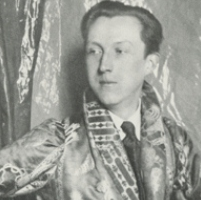
Sir Sacheverell Reresby Sitwell, 6th Baronet, was an English writer, particularly on baroque architecture, and an art and music critic. Sitwell produced some 50 volumes of poetry and some 50 works on art, music, architecture, and travel.

The Sitwells, from Scarborough, North Yorkshire, were three siblings who formed an identifiable literary and artistic clique around themselves in London in the period roughly 1916 to 1930. This was marked by some well-publicised events, notably Edith's Façade with music by William Walton, with its public debut in 1923. All three Sitwells wrote; for a while their circle was considered by some to rival Bloomsbury, though others dismissed them as attention-seekers rather than serious artists.

Sir Francis Osbert Sacheverell Sitwell, 5th Baronet CH CBE was an English writer. His elder sister was Edith Sitwell and his younger brother was Sacheverell Sitwell. Like them, he devoted his life to art and literature.

Renishaw Hall is a country house in Renishaw in the parish of Eckington in Derbyshire, England. It is a Grade I listed building and has been the home of the Sitwell family for nearly 400 years. The hall is southeast of Sheffield, and north of Renishaw village, which is northeast of Chesterfield.

Weston Hall is a 17th-century manor house in Weston, Northamptonshire. The house was owned by the Sitwell family's ancestors from 1714 to 2021. It is a Grade II* listed building.
John George Pearson was an English novelist and an author of biographies, notably of Ian Fleming, of the Sitwells, and of the Kray twins.
"Agamemnon's Tomb" is a poem by Sacheverell Sitwell. It was first published in 1933, the fifth of twenty poems in Canons of Giant Art: Twenty Torsos in Heroic Landscapes.

Sir George Reresby Sitwell, 4th Baronet was a British antiquarian writer and Conservative politician who sat in the House of Commons between 1885 and 1895.
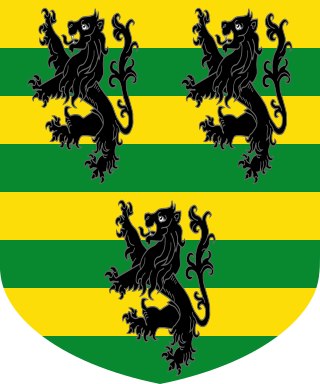
The Sitwell Baronetcy, of Renishaw in the County of Derby, is a title in the Baronetage of the United Kingdom. It was created on 3 October 1808 for Sitwell Sitwell, Member of Parliament for West Looe. The Sitwell family had been ironmasters and landowners in Eckington, Derbyshire, for many centuries.
Sir George Reresby Sacheverell Sitwell, 8th Baronet is a British businessman.
Henderson's, better known as The Bomb Shop, was a bookshop at 66 Charing Cross Road, London known for publishing and selling both radical left and anarchist writing and modernist literature. The shop was founded in 1909, and was a father and son operation run by Francis Riddell Henderson, formerly the London representative of Walter Scott Publishing. The shop was bought by Eva Collet Reckitt, and became the first of the Collet's chain of left-wing bookshops.
David Stuart Horner was a crime fiction novelist and the longtime partner of Osbert Sitwell.
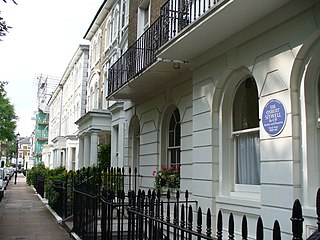
Carlyle Square is a garden square off the King's Road in London's Chelsea district, SW3. The square was laid out on market gardens and was originally called Oakley Square. It was later named in honour of the writer Thomas Carlyle in 1872.

Curzon Street Baroque is a 20th-century inter-war Baroque revival style. It manifested itself principally as a form of interior design popular in the homes of Britain's wealthy and well-born intellectual elite. Its name was coined by the English cartoonist and author Osbert Lancaster, as Curzon Street in Mayfair was an address popular with London high society. While previous forms of Baroque interior design had relied on French 18th-century furnishings, in this form it was more often than not the heavier and more solid furniture of Italy, Spain, and southern Germany that came to symbolise the furnishings of new fashion.
William Ronald Sacheverell Sitwell is a British editor, writer and broadcaster. He is also a restaurant critic for The Daily Telegraph and the former editor of Waitrose Food.
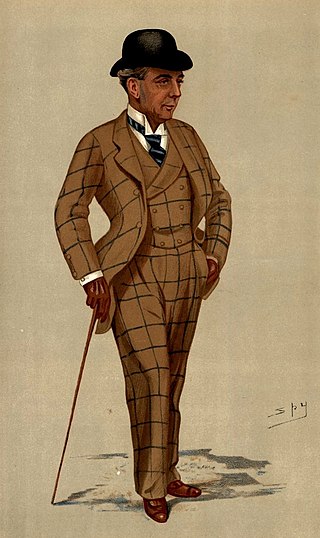
Thomas Anthony Hwfa Williams (1849/50–1926) was a British Army officer and racecourse manager. A figure of the Marlborough House Set, he was a close associate of the future King Edward VII, and his wife Mrs. Hwfa Williams a leader of the fashionable world.
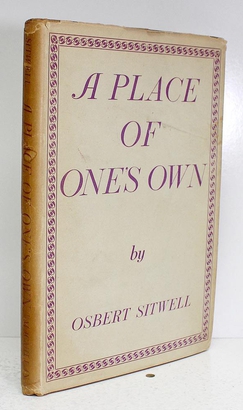
A Place of One's Own is a mystery novel written by the British author Osbert Sitwell that was published in 1940. Belonging to the ghost story genre, the novel was an extension of a short story that Sitwell had previously written. The plot follows the lives of an elderly couple at the turn of the twentieth century who move into a new house, only to discover that it appears to be haunted.
References
- Cevasco, G. A. (1987). The Sitwells: Edith, Osbert, and Sacheverell. Boston: Twayne. ISBN 9780805769531 . Retrieved 16 November 2023.
- Horner, David; Pottle, Mark (3 September 2004). "Sitwell, Sir George Reresby, fourth baronet". Oxford Dictionary of National Biography (online ed.). Oxford University Press. doi:10.1093/ref:odnb/36115.
{{cite encyclopedia}}: CS1 maint: date and year (link)(Subscription or UK public library membership required.) - Lubenow, William C. (2010). Liberal Intellectuals and Public Culture in Modern Britain, 1815–1914: Making Words Flesh. Woodbridge: The Boydell Press. ISBN 9781846158797 . Retrieved 16 November 2023.
- Pearson, John (1978). Façades: Edith, Osbert, and Sacheverell Sitwell. London: Macmillan. ISBN 9780333254752 . Retrieved 18 November 2023.
- Skipwith, Joanna; Bent, Katie, eds. (1994). The Sitwells and the Arts of the 1920s and 1930s. London: National Portrait Gallery. ISBN 9781855141407 . Retrieved 12 November 2023.
- Taylor-Martin, Patrick (1984). Introduction. Left Hand, Right Hand! An Autobiography. By Sitwell, Osbert. Harmondsworth: Penguin. ISBN 0140570098 . Retrieved 19 November 2023.
- Vinson, James; Kirkpatrick, D. L., eds. (1985). 20th-Century Poetry. St James Reference Guide to English Literature, 5. Chicago: St James Press. ISBN 9780912289212 . Retrieved 19 November 2023.